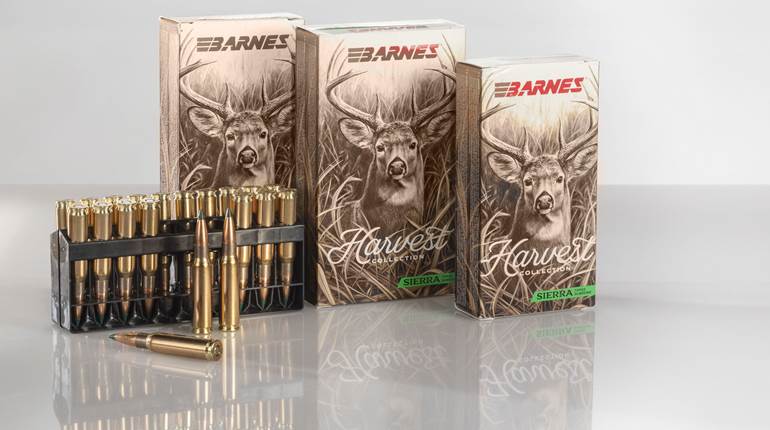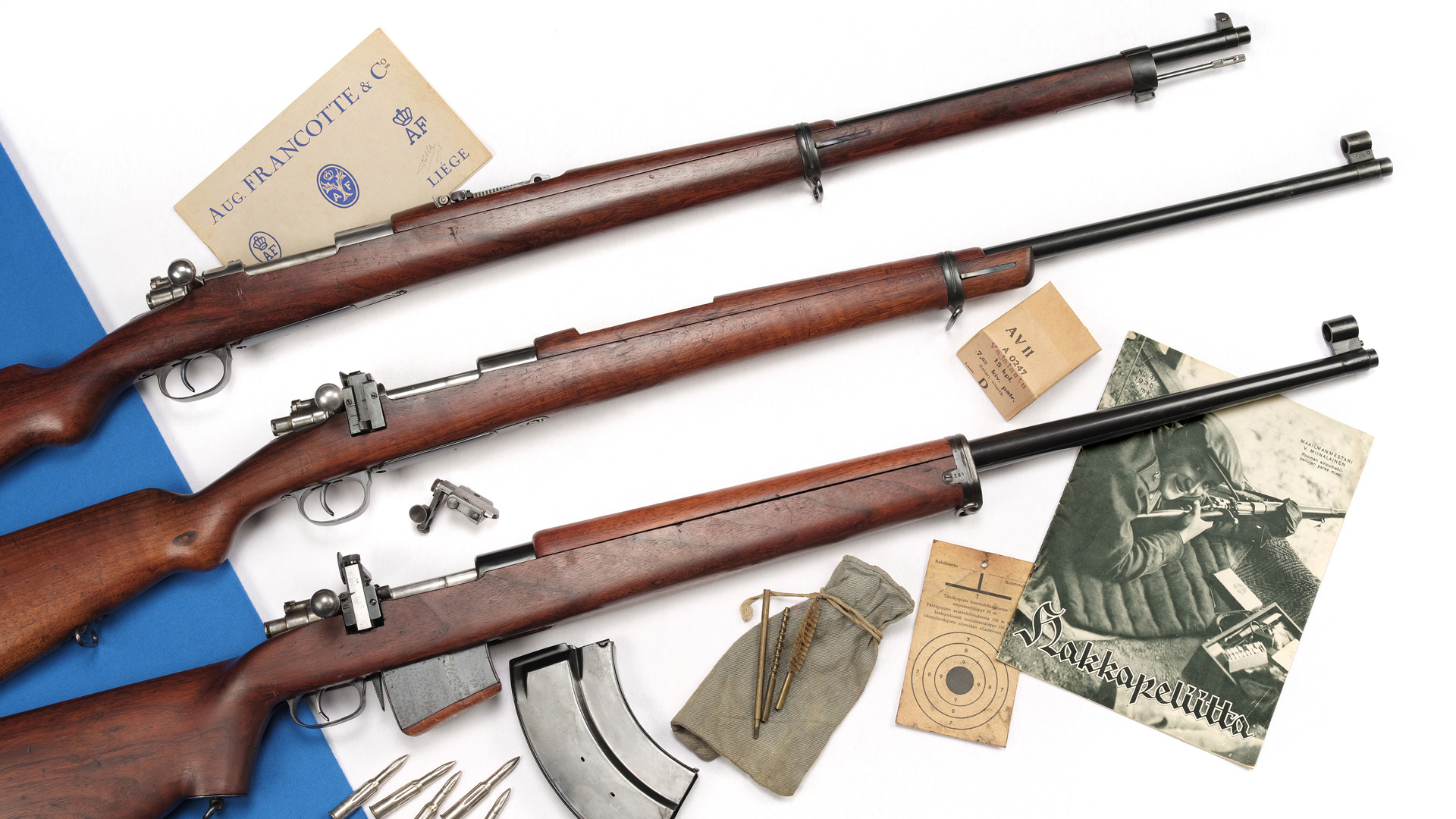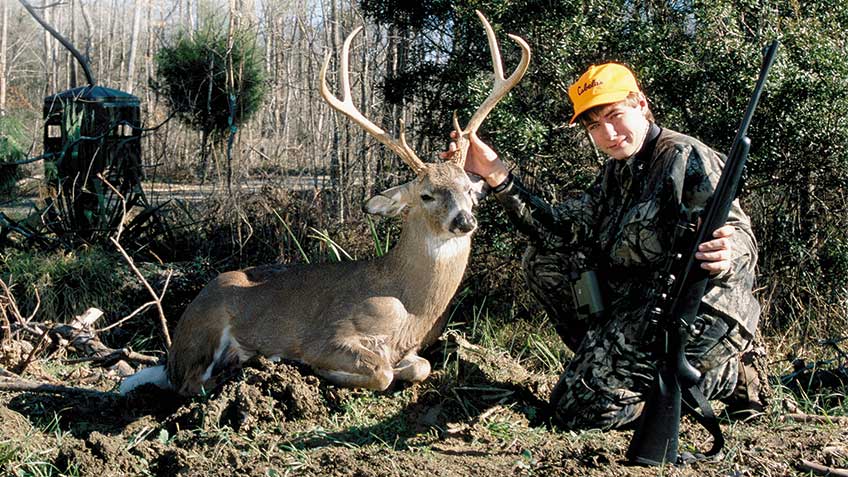
This .243 Winchester Loading Bench column appeared originally in the July 2004 issue of American Rifleman. To subscribe to the magazine, visit the NRA membership page here and select American Rifleman as your member magazine.
When it comes to rifle cartridges, I have a soft spot for the .243 Winchester, as it brought a couple of important “firsts” to my life. The first cartridge I ever handloaded was a .243 Win., assembled under the watchful eye of my grandfather, who later helped me use it to good effect on an alfalfa-thieving woodchuck. Also, the first centerfire rifle I ever owned was in .243 Win. Its acquisition, too, was aided by my grandfather a year or so later.
I had worked all summer bailing hay to earn enough money, and on Gramp’s advice, I had ordered the new Remington 788. I made an unsolicited promise to Gramp the night I bought the rifle that I would never pollute its barrel with factory ammo, and for many years, I kept that promise. Deer season was close at hand, so we loaded some 105-gr. Speer round-nose bullets over a charge of H-4831 and lined up the open sights so they hit somewhere close to the bullseye. Just a few weeks after taking possession of that rifle, I ended my farm chores about an hour before dark and took the .243 out to look for deer. Thirty minutes later, I was field dressing a big doe and was hooked—on handloading, on deer hunting and on the .243 Win.

That old 788 Remington was ugly, but it sure would shoot. I no longer have it, and I mourn its loss. I have owned several more .243 Win.-chambered guns, most actually better rifles, but there was something special about that gun. I remember that, back then, the .243 Win. was the subject of a lot of myth and lore. It was rumored to shoot so flat you needn’t hold over any target still in the same county. It was also said to be “sizzling fast” and that it would kill deer like a lightning strike, no matter where the bullet hit them. I know now that most of that is not true, but it doesn’t matter, it’s still a great cartridge.
The .243 Win. is simply the .308 Win. necked down to take a .243”-diameter bullet. The 20-degree shoulder is maintained, and the case is slightly longer at 2.045”. The maximum overall cartridge length is 2.710”, which makes it a good fit in most “short action” rifles. As part of the family of cartridges based on the .30-’06 Sprg. parent case, the .243 Win. takes a large rifle primer. SAAMI lists the maximum average pressure for the .243 Win. at 60,000 p.s.i. Commonly available bullet weights range from 55 grs. to 105 grs. Some target shooters use bullets that are slightly heavier, but stabilizing them requires a faster twist rate than the standard 1:10”, and they have little application for hunting.

The .243 Win.’s creation and success is often credited to gun writer Warren Page, who sang its praises both as a wildcat and as an “honest” factory cartridge. It is clearly the most successful of the “dual use” cartridges, far outranking the 6 mm Remington or the .257 Roberts. Based on an average of the 2001 sales rankings for the big three ammo makers— Federal, Remington and Winchester— the .243 Win. was fifth in popularity for rifle cartridges.
As a deer cartridge, the .243 Win. is nothing if not controversial. It’s often selected as a “first gun” cartridge, and I suspect that’s where most of the controversy is rooted. The .243’s nearly quarter-inch bullet is adequate for deer hunting, but it doesn’t carry much insurance. The little quarter-bore has almost no forgiveness built in as compensation for a poorly placed shot, and a new hunter is far more likely to place the bullet imprecisely than is an experienced hunter.

I actually chose the .243 Win. for my kids when they started hunting and fell prey to exactly that trap. Between the two of them, they had accounted for three or four deer with no problems. Then my daughter hit a small doe a bit too far back. The bullet didn’t exit, and with the misting rain the skimpy blood trail soon was lost. The deer hadn’t run far, but it had hooked around in a direction we had not expected, and it wasn’t until a day later when we found it. I am not saying the .243 Win. is always a bad choice for a new hunter, just that you need to understand its limitations.
Based on more than 35 years of experience with the .243 and a bunch of venison in the freezer, I have formed some opinions about this cartridge. I think the .243 Win. is a fine deer cartridge for “average-size” deer. However, it would not be my first choice for hunting big, trophy bucks. I also don’t think it’s a long-range deer cartridge. It simply starts to run out of steam past 250 yds. I also don’t believe it’s enough gun for elk, moose or even black bear.
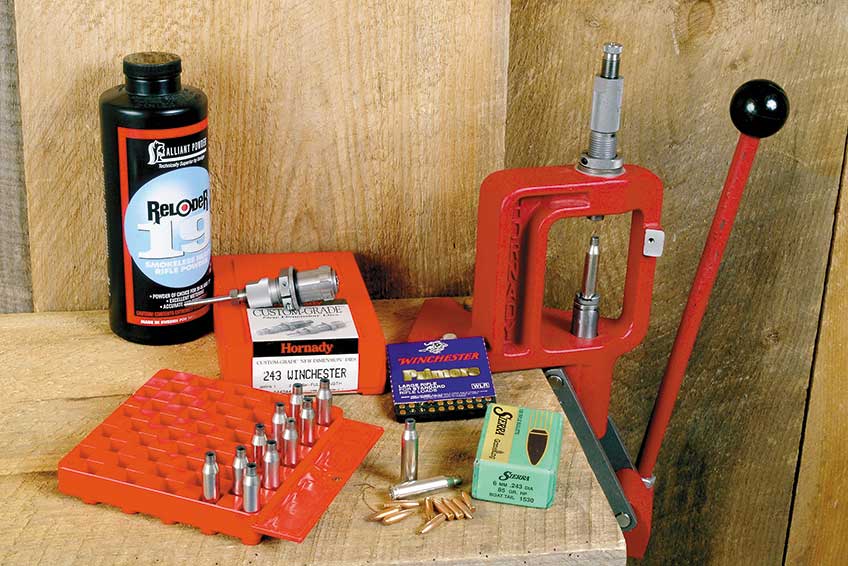
For deer hunting, clearly the best choices are going to be 100-gr. or 105-gr. bullets at about 2950 f.p.s. Bullet construction is important. If too soft, they might not penetrate enough for an exit. If a switch is made to some of the premium bullets, penetration is deeper, but the frontal area is pretty small. I have tried most of the popular .243 bullets on deer and have never been completely satisfied with any of them. I’ll admit that I am hard to please when it comes to bullet performance, but I think we ask a lot of a .243 bullet when shooting deer. The balance is a fine line, and the answer might well be in newer bonded bullets such as the Swift Scirocco. They tend to retain weight, which aids in penetration while expanding to a relatively large frontal area.
Antelope are smaller and are handled well with 90- to 100-gr. plastic-tipped bullets, such as the Nosler Ballistic Tip or the Speer 100-gr. Boattail. I have also used these bullets on small Texas deer with good results.
The strength of the .243 Win. is in its versatility. It is a true “dual use”cartridge that will perform adequately on most deer and all varmints. The .243 Win. is an excellent coyote cartridge, particularly for winter-toughened, big, northeastern coyotes. I prefer bullets in the 70- to 85-gr. weight range.

For a lot of years, I shot the 85-gr. Sierra, boattail hollow-point bullet over 44 grs. of IMR 4350 powder. Muzzle velocity is about 3300 f.p.s. depending on which rifle I am shooting. I can’t remember how many woodchucks and coyotes that load has accounted for, and if I could I would be embarrassed to tell you, but it was a bunch. Particularly the woodchucks. In my younger days, I was at war with them and spent most of my summer evenings prowling the local farms.
In recent years, I have used the 70-gr. Nosler Ballistic Tip and 75-gr. Hornady V-Max bullets with good results. When I was finally able to shoot varmints in the West, I found that these lighter bullets worked very well on prairie dogs, rockchucks and Western coyotes. They are more predictable than the lighter .22-cal. bullets in the wind that seems to haunt every prairie dog town. The recoil is a bit higher, which contributes to shooter fatigue, but when the wind is blowing and the shots are long, I prefer a .243 to the .22s. The “ultra light” 6 mm bullets such as the 55-gr. Ballistic Tip can be pushed past 4000 f.p.s., and the results are impressive on varmints.

It’s often written that the .243 Win. is a finicky ballistic creature that can be temperamental about how it’s loaded, but I have rarely encountered that. Currently I have three rifles chambered for .243 Win. and I would guess that I have loaded for a half dozen more over the years. I can’t recall that any of them gave me a lot of problems. The .243 Win. likes powders in the 4350, RL19 and 4895 medium-slow burn rate range. The majority of my loads over the years have been with H-4350 or IMR-4350 powder. With lighter bullets I sometimes use IMR-4895. Over the years I have also used H-380, H-414 and IMR-4831 powders with acceptable results.
As with any cartridge that headspaces on the shoulder, it’s best to adjust the sizing die to resize once-fired cases without pushing back the shoulder. That ensures a tight fit in the chamber of the rifle from which they are first fired. I usually seat the bullets 0.005” to 0.010” from contacting the rifling lands, although every rifle and bullet has its preferences.
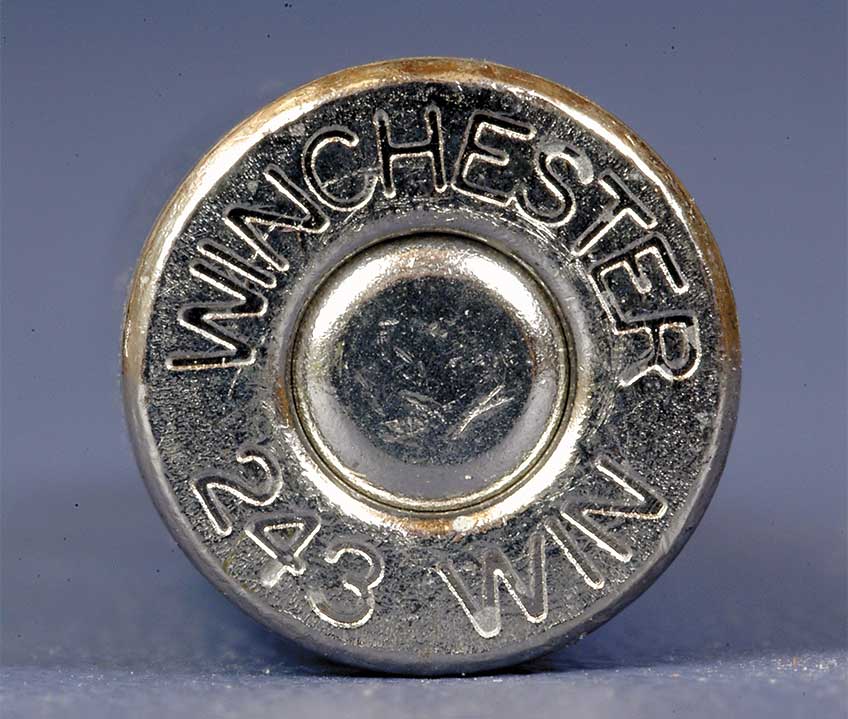
I don’t recall ever loading for a .243 Win. that failed to shoot as well as I had hoped. That is m.o.a. or better for a sporter weight and something less than that for a varmint weight rifle. It sometimes took a little tweaking, but if the rifle was good the cartridge was always accurate. That old 788 would put five shots in half an inch on a good day. I sure do miss it.
We have all heard the old saying, “beware of the hunter with only one gun.” My guess is that it started with a guy shooting a .243 Win.















